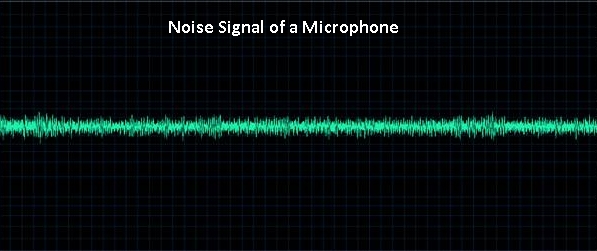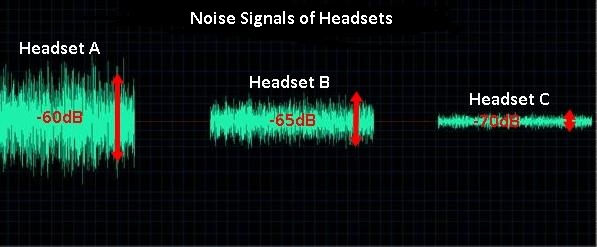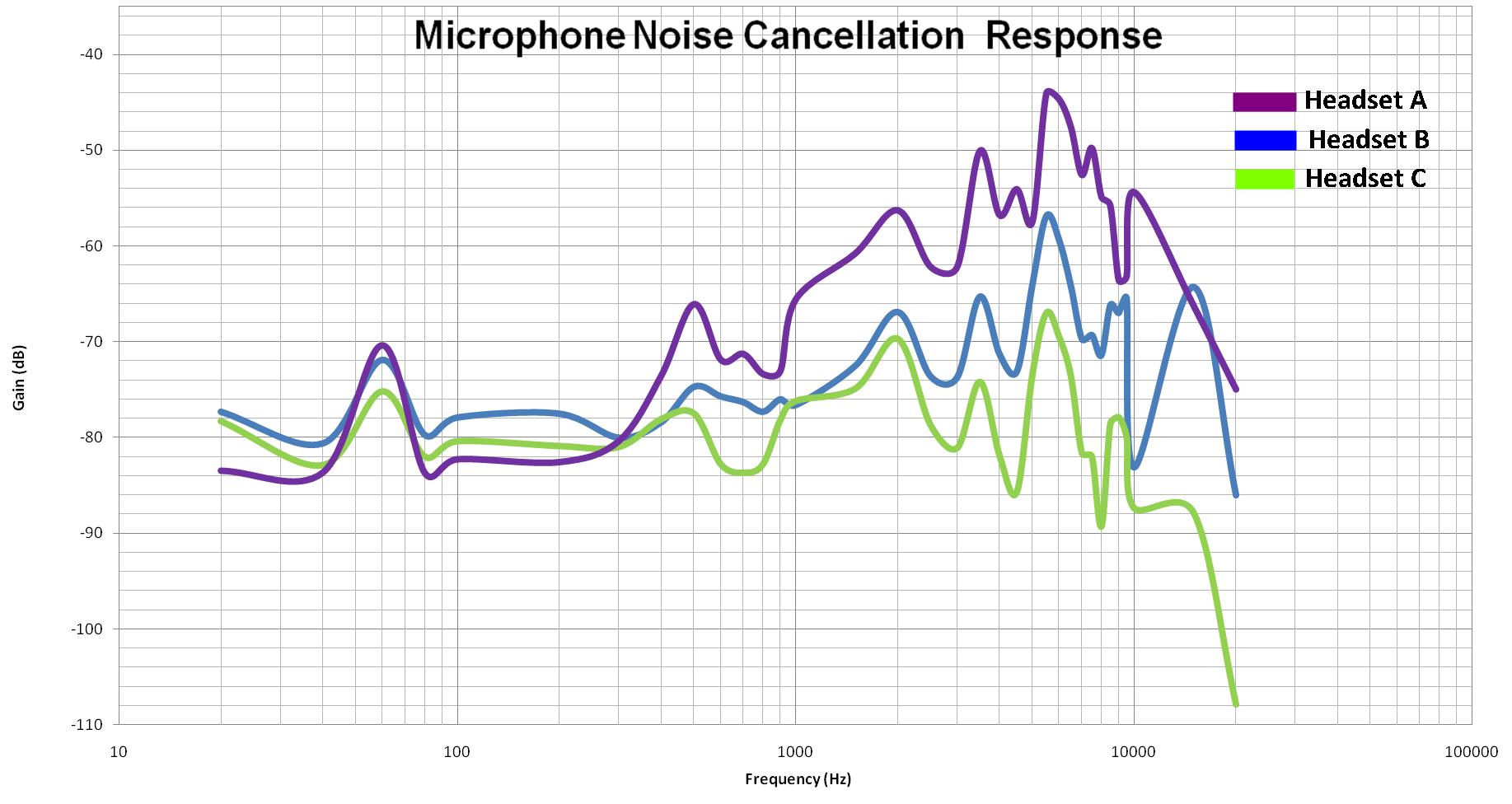Frequency Analysis of the Noise Cancellation Ability of a Microphone

Performing frequency analysis on the noise signal that a microphone records is important for finding out which frequencies a microphone cancels out noise most effectively and which frequencies it cancels out noise most poorly.
Thus, by using this method, an engineer can find out which frequencies a headset cancels out noise the poorest and can then redesign the headset so that it cancels out noise better at those frequencies; thus, he can improve the headset's overall noise cancellation ability.
Below is a graph showing the noise signals that three headsets recorded:

The headsets were all exposed to the same exact level of pink noise. The pink noise simulates noise in the background that the headsets are supposed to cancel out. So, the headset that records the least amount of the noise has the best cancellation. We can see that Headset C has the noise cancellation and Headset A has the worst cancellation with Headset B in between.
Now below is the graph of the frequency response of the headsets. The above graph are the noise signal shown in response to time but now the below graph are the noise signals in response to frequency. Thus, we can see how the microphones in the headsets respond specifically to each and every frequency within our tested bandwidth, which is 20Hz to 20KHz.

Based on this graph, we can see clearly which headset has the best noise cancellation. Headset C records the least signal, so it's above it cancels out the greatest noise while Headset A picks up the most signal, so it has the worst cancellation. Yet, this is not why we look at the frequency analysis graph of headsets, because we could tell which headset has the best noise cancellation by just looking at the graph in the time domain.
The reason why we look specifically at a frequency analysis graph is so we can see exactly which frequencies the headsets cancel out noise the best and which frequencies the headsets cancel out noise the worst. For the most part, all of the headsets cancel out the low frequencies better than the high frequencies by a good deal more. Let's take a look now especially at the purple headset, Headset A. You can see the drastic difference in levels in how it cancels out the low frequencies vs. the high frequencies. For a great deal of the low frequencies from about 20Hz-45Hz and 80Hz-300Hz, Headset C has the best cancellation out of all the headsets. However, at the mids and high frequencies, from 300Hz all the way to about 15KHz, it has the worst cancellation, since it records the most noise out of all the other headsets.
Thus, an engineer would know that he would have to produce better noise cancellation at the frequencies of 300Hz to 15KHz to produce the noise cancellation of Headset C. This is way frequency analysis is important.